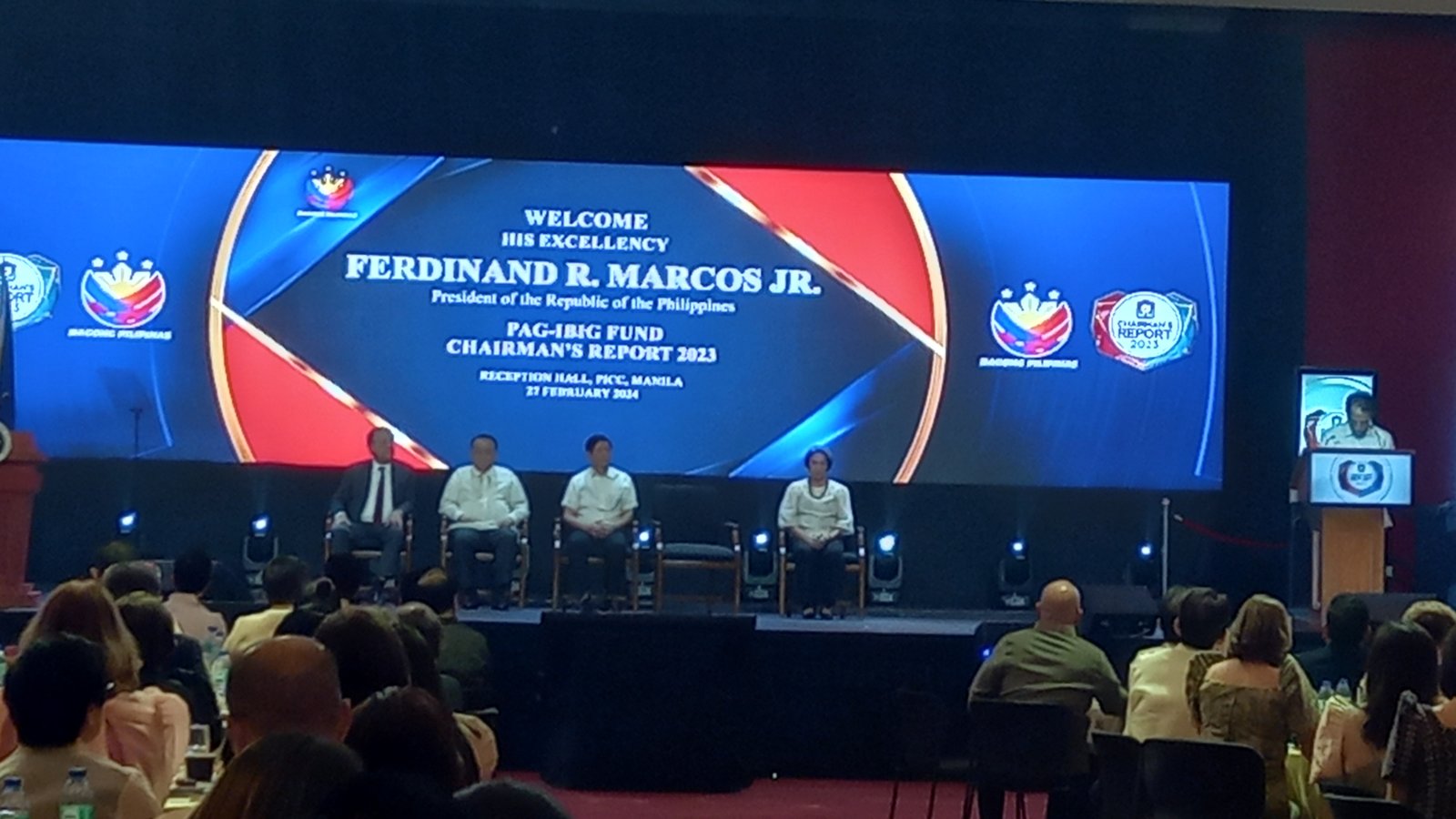Making history: Pag-IBIG posts highest dividend rates, modified savings reach 7.05% per annum
By Trixee Rosel

The Home Development Fund, or the Pag-IBIG Fund, has achieved its highest dividend rates since the Covid-19 pandemic began, as its regular savings dividend rate for 2023 reached 6.55 percent and its Modified Pag-IBIG 2 (MP2) Savings rate surged to 7.05 percent per annum.
The announcement was made by Pag-IBIG Fund Chairperson and Department of Human Settlements and Urban Development (DHSUD) Secretary Jose Rizalino Acuzar during the agency’s annual gathering of members, partners, and stakeholders at the PICC Convention Center on Feb. 27.
The dividend rates on the members’ savings of the agency were the highlights of the Pag-IBIG Fund Chairman’s Report for 2023, where President Ferdinand R. Marcos Jr. lauded the agency’s high dividend rates and its success in fulfilling its mandate of serving the Filipino workforce.
“I'm pleased to report that your organization's management of our national investment scheme has enabled our citizens to obtain affordable home financing. Allow me to express my gratitude to each and every one of you, the Pag-IBIG Fund's owners, interested property builders, and other important parties who helped the fund achieve its goal of supporting the Filipino labor force,” the President said.
“As I mentioned the previous year, I appreciate your efforts to continue my father's legacy because the Pag-IBIG Fund was established under his administration. I ask you to keep working responsibly and honestly in all that you do,” the Chief Executive added.
Pag-IBIG Fund posted its best performing year in 2023 as the agency’s net income reached a record high of P49.79 billion, a 28% increase from the P44.50 billion the year prior.
The agency also reported several record high figures for the year, with home loans reaching P126.04 billion; total membership savings collected amounting to P89.26 billion, and loan payments amounting to P142.19 billion.
Pag-IBIG Fund also increased the number of its members that secured new homes from its housing loan programs-- a total of 96,848 members. It also assisted 2.65 million members through its short-term loans.
The agency ended the year with total assets at its highest, amounting to P925.61 billion.
Acuzar explained that the dividend rates reflect the agency's record-high net income combined with the highest dividend payout ratio permitted by the Pag-IBIG Board.
He said the Pag-IBIG Board approved a 97.86 percent payout ratio, resulting in a dividend amount of P48.76 billion – the highest in the agency’s history.
Assuring the Fund's reliability and security, the DHSUD chief gave members the assurance that the Pag-IBIG Fund continues to provide significant returns on their savings.
He noted that when Pag-IBIG Fund functions successfully, the members gain most, and the agency will be their dependable partner as they strive for an improved and more stable life.
'OFWs should begin investing now'
Acuzar believes that PAG-IBIG MP2 is an excellent savings option for Overseas Filipino Workers (OFWs) with a low risk tolerance.
“Investing in the Pag-IBIG MP2 program is a great way to save money and meet your future financial goals. It's also an ideal way to earn passive income by putting a small sum of money to work for you.”
The Modified Pag-IBIG II (Pag-IBIG MP2) Savings Program is a 5-year voluntary savings facility designed for active Pag-IBIG Fund members who want to supplement their Pag-IBIG Regular Savings with more savings and greater payouts.
Members who have made at least one monthly savings contribution in the past six months are eligible for the program. Former Pag-IBIG Fund members, such as pensioners and retirees, who have other monthly income and have saved at least 24 months prior to retirement, are also eligible to enroll.
To start saving, a member may contribute at least P500, which will be used as the payment date.
The Modified Pag-IBIG II (Pag-IBIG MP2) Savings Program allows members to earn in two ways: through annual dividend payouts or dividend compounding after five years.